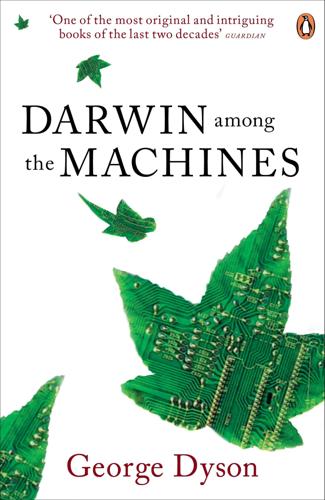
Darwin Among the Machines
by
George Dyson
Published 28 Mar 2012
Von Neumann had discussed the underlying concept—in principle similar to Zworykin’s iconoscope but operating in reverse—while at the Moore School in 1944 and explored its possible use as a high-speed storage medium in the EDVAC report of 1945. Frederick C. Williams, after working on pulse-coded IFF (Identification Friend or Foe) radar systems at England’s Telecommunications Research Establishment during the war, developed a practical version in 1946 and succeeded in building a small computer at Manchester University, under the direction of M. H. A. Newman, that demonstrated CRT-based storage and a rudimentary stored program in June 1948.
…
See Institute for Advanced Study IAS (Institute for Advanced Study) computer, xii, 78–79, 91–92, 93–107 as ancestor of the microprocessor, 98, 203 and artificial life, xii, 111–18, 121, 124–26, 129, 192. see also Barricelli construction and operation, 97–107, 111 and digital computing at RAND, 104, 148, 178 duplication of, 97, 98, 107 logical and physical architecture, 98, 99–107, 157 and nuclear weapons, 78–79, 91–92, 107, 111 and origins of IBM model 701, 91, 106 origins of, and weather prediction, 87–88 peripheral equipment, 98, 101–102, 106, 144 programming of, 102, 106–107, 114, 121, 130 progress reports, and impact of, 98, 99, 121 and random-access memory, 98, 103–105, 113 shakedown run, 78–79, 111 siblings and offspring, listed, 97 and von Neumann, 78–79, 87–88, 91–92, 97, 98–102, 106–108, 125, 153 IBM (International Business Machines) 12, 91, 103–104, 106, 122, 144, 148, 179. see also SAGE and evolution of operating systems, 122, 189 and IAS computer project, 91, 106 and punched-card computing, 60, 78, 81, 82, 83, 106, 122, 144 and von Neumann, 91 IBM computers: model 650, 122; model 701, 91, 106, 178; model 704, 118, 184; model 7090, 151, 182 iconoscope, 85, 104 ideas. see also consciousness; meaning; mind Darwinian evolution of, 28, 184 and formal logic, 38, 43, 46, 49, 129 nature of, 136, 158, 225 IFF (Identification Friend or Foe) radar, 104 Illinois, University of, 107 immortality, and composite organisms, 175, 191, 210 and non-Darwinian evolution, 31 improbability, and origins of life, 29–30, 112, 177 incompleteness (mathematical), 49–50, 53–54, 70, 72, 78, 120, 167, 228 Industrial Revolution, 21–22, 134 infinity, and finite-state machines, 10, 35, 43, 56, 130, 190 information. see also bandwidth; bits; communication; cybernetics; telecommunication and cybernetics, 6, 98, 101 defined, by Bateson, 167 flow, in data networks, 12, 110, 150, 158–59, 205 mathematical theory of, 110, 153, 155 and meaning, 8, 155, 158, 167, 171, 184–85 and money, 162, 165 and origins of life, 12, 29 insects, 8, 13, 129, 170, 174, 210 Instinct and Reason (Smee), 45, 48 Institute for Advanced Study (IAS), Princeton, N.J.
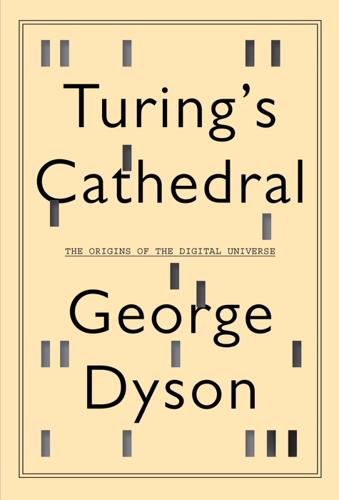
Turing's Cathedral
by
George Dyson
Published 6 Mar 2012
He just bubbles with ideas all the time.”27 Pomerene and Ware were able to trade their New York apartments with two Princeton residents who were working for the United Nations in Manhattan, exchanging a long commute by train for a short commute by bicycle down Nassau Street and Olden Lane. Pomerene and Ware had both worked on pulse-coded IFF (Identification Friend or Foe) radar systems during the war. As soon as radar had made it possible to hit targets at night or beyond visible range, otherwise adversarial air forces agreed on a system of coded signals identifying their aircraft as friend or foe. In contrast to the work of wartime cryptographers, whose job was to design codes that were as difficult to understand as possible, the goal of IFF was to develop codes that were as difficult to misunderstand as possible.
…
Burks, Arthur W. (1915–2008), 5.1, 6.1, 6.2, 7.1, 7.2, 7.3, 8.1, 8.2, 8.3, 11.1, 12.1, 15.1, 18.1 and ENIAC on von Neumann, Gödel, and Turing Bush, Vannevar (1890–1974), 5.1, 7.1, 11.1, 11.2 Byllynge, Edward calculus ratiocinator (Leibniz), 6.1, 6.2, 18.1 Caldwell, Samuel H. (1904–1960), 5.1, 5.2 California Institute of Technology (Caltech), 9.1, 15.1 California, University of, at Los Angeles (UCLA), 9.1, 9.2, 9.3, 9.4, 10.1, 14.1, 14.2, 18.1, 18.2 Cambridge University, 3.1, 6.1, 8.1, 8.2, 13.1, 13.2, 13.3, 16.1 Cantor, George (1845–1918) capacitors, 5.1, 5.2, 8.1, 8.2, 8.3 carbon dioxide, effect on climate Carteret, Sir George (1610–1680) Casino-on-the-Park (New York) Castle Bravo (hydrogen bomb test, 1952), 1.1, 18.1 cathode-ray tube (CRT), 1.1, 5.1, 8.1, 14.1 proposed as memory (1945) see also Williams (memory) tubes cell phones cellular automata, 8.1, 11.1, 11.2, 11.3, 15.1 central arithmetic unit, 5.1, 8.1, 8.2, 8.3, 12.1 Central Park (New York) central processing unit (CPU) Chandrasekhar, Subrahmanyan (1910–1995) Charles II (1630–1685) Charney, Elinor, 9.1, 14.1 Charney, Jule (1917–1981), 9.1, 9.2, 14.1, 14.2, 18.1, 18.2 on Bigelow on von Neumann on Zworykin Chicago, University of, 3.1, 3.2, 5.1, 9.1 Church, Alonzo (1903–1995), 13.1, 13.2, 13.3 Church, George Church-Turing thesis Clarke, Benjamin classification (secrecy), 5.1, 5.2, 13.1, 18.1, 18.2, 18.3 Clippinger, Richard (1913–1997) cloud computing Cocktail Party, The (Eliot, 1950) codes and coding apps (applications), 14.1, 17.1, 18.1 asynchronous “background” vs. “problem” (ENIAC, 1947) binary, ack.1, 1.1, 5.1, 5.2, 6.1, 6.2, 8.1, 13.1, 18.1 digital vs. analog, 12.1, 14.1 error catastrophe and error-correcting, 1.1, 12.1, 15.1 genetic, 1.1, 4.1, 11.1, 12.1, 12.2, 12.3, 14.1, 15.1, 15.2, 16.1, 17.1, 17.2 Gödel’s theorems and, 6.1, 6.2 IFF (Identification Friend or Foe), 7.1, 8.1 interstellar propagation of metazoan, 11.1, 12.1, 14.1, 16.1, 17.1 non-linear proliferation of, 1.1, 1.2, 15.1, 18.1 statistical vs. digital universal (Leibniz), 1.1, 6.1, 6.2, 6.3, 18.1 unpredictability of, prf.1, 18.1 see also cryptography (and cryptanalysis); language(s); “On Computable Numbers”; order codes; pulse-frequency coding; self-reproducing automata; software Cold War, 4.1, 4.2, 11.1, 15.1 Collected Works (von Neumann) collector societies, 12.1, 18.1 College of New Jersey, 2.1, 3.1 Colossus (cryptanalytical machine), 13.1, 16.1, 18.1, 18.2 Columbia University, 7.1, 7.2, 9.1, 16.1 command line, origins of, ack.1, ack.2, 17.1 communication, mathematical theory of (Shannon), 5.1, 7.1 Computer and the Brain, The (von Neumann, 1958) computer science, 14.1, 14.2, 14.3, 18.1 Computron Conant, James (1893–1978), 5.1, 11.1, 11.2, 11.3 continuum hypothesis Courant Institute (NYU) Crane, Hewitt (1927–2008), 8.1, 18.1 Crawford, Anne (Flexner) creationism Crick, Francis (1916–2004), 1.1, 12.1, 15.1 crossing (of gene sequences), 12.1, 12.2, 12.3, 12.4, 18.1 Crossroads Nursery School (IAS), 6.1, 7.1, 18.1 cryptography (and cryptanalysis), 1.1, 13.1 crystallography, X-ray, 8.1, 18.1 Cybernetics movement, origins of cyclogenesis Dán, Charles, 10.1, 10.2 Darwin, Sir Charles (1887–1962) DASK (Dansk Algoritmisk Sekvens Kalkulator) Davis, John H.
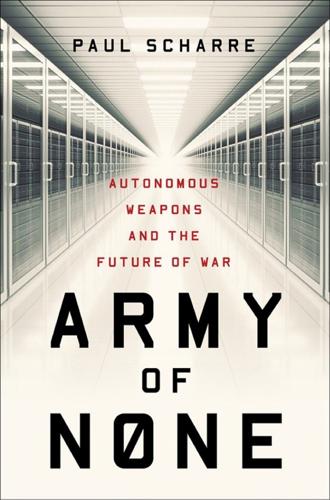
Army of None: Autonomous Weapons and the Future of War
by
Paul Scharre
Published 23 Apr 2018
Abbreviations AAA antiaircraft artillery ABM Anti-Ballistic Missile ACTUV Anti-submarine warfare Continuous Trail Unmanned Vessel AGI artificial general intelligence AGM air-to-ground missile AI artificial intelligence AMRAAM Advanced Medium-Range Air-to-Air Missile ARPA Advanced Research Projects Agency ASI artificial superintelligence ASW anti-submarine warfare ATR automatic target recognition BDA battle damage assessment BWC Biological Weapons Convention CCW Convention on Certain Conventional Weapons C&D Command and Decision CIC combat information center CIWS Close-In Weapon System CODE Collaborative Operations in Denied Environments DARPA Defense Advanced Research Projects Agency DDoS distributed denial of service DIY do-it-yourself DMZ demilitarized zone DoD Department of Defense FAA Federal Aviation Administration FIAC fast inshore attack craft FIS Fire Inhibit Switch FLA Fast Lightweight Autonomy GGE Group of Governmental Experts GPS global positioning system ICRAC International Committee for Robot Arms Control ICRC International Committee of the Red Cross IEEE Institute of Electrical and Electronics Engineers IFF identification friend or foe IHL international humanitarian law IMU inertial measurement unit INF Intermediate-Range Nuclear Forces IoT Internet of Things J-UCAS Joint Unmanned Combat Air Systems LIDAR light detection and ranging LOCAAS Low Cost Autonomous Attack System LRASM Long-Range Anti-Ship Missile MAD mutual assured destruction MARS Mobile Autonomous Robotic System MMW millimeter-wave NASA National Aeronautics and Space Administration NGO nongovernmental organization NORAD North American Aerospace Defense Command ONR Office of Naval Research OODA observe, orient, decide, act OPM Office of Personnel Management PGM precision-guided munition PLC programmable logic controllers RAS IEEE Robotics and Automation Society R&D research and development ROE rules of engagement SAG surface action group SAR synthetic aperture radar SAW Squad Automatic Weapon SEC Securities and Exchange Commission SFW Sensor Fuzed Weapon SORT Strategic Offensive Reductions Treaty START Strategic Arms Reduction Treaty SUBSAFE Submarine Safety TASM Tomahawk Anti-Ship Missile TBM tactical ballistic missile TJ Thomas Jefferson High School TLAM Tomahawk Land Attack Missile TRACE Target Recognition and Adaption in Contested Environments TTO Tactical Technology Office TTP tactics, techniques, and procedures UAV uninhabited aerial vehicle UCAV uninhabited combat aerial vehicle UK United Kingdom UN United Nations UNIDIR UN Institute for Disarmament Research U.S.
…
Challenge, 146–47 ICRAC (International Committee for Robot Arms Control), 285 ICRC (International Committee of the Red Cross), 269–70 identification friend or foe (IFF) signal, 138, 139, 144, 379n IEDs (improvised explosive devices), 14 IEEE-RAS Technical Committee on Roboethics, 280–81 IEEE Spectrum, 104–5 IFF signal, see identification friend or foe signal “I Have No Mouth and I Must Scream” (Ellison), 234 IHL, see international humanitarian law ImageNet dataset, 129 improvised explosive devices (IEDs), 14 Inception-v3 neural network, 129 incomprehensibility of complex systems, 153–54 indoor flight/reconnaissance, 68–71, 121–24 inertial measurement unit (IMU), 123 inertial navigation, 42 information technology, see cyberwarfare INF (Intermediate-Range Nuclear Forces) Treaty, 301 Innocent II (pope), 331 intelligence autonomy and, 28–33, 50 spectrum of, 31f “intelligence explosion,” 233 intelligent machines, rise of, 231–48; see also advanced artificial intelligence; artificial general intelligence Intermediate-Range Nuclear Forces (INF) Treaty, 301 International Committee for Robot Arms Control (ICRAC), 285 International Committee of the Red Cross (ICRC), 269–70 International Court of Justice, 262 international humanitarian law (IHL) and autonomous weapons bans, 348 core principles, 251–52 and human dignity, 295 human judgment and, 358–59 Martens clause, 263–66 precautions in attack, 258 principle of distinction, 252–55 principle of proportionality, 255–57 and rogue states, 268–69 unnecessary suffering, 257–58 internecine wars, 288 Internet of Things (IoT), 219–20 Internet Worm (1988), 212, 225 Introduction to Artificial Intelligence, 245 introspective systems, 226 Iran cyberattacks by, 213 RQ-170 drone incident, 209 Stuxnet attack on nuclear facilities, 214 swarming of U.S. ships, 22, 107 U.S. military and, 207 Iran Air Flight 655, 169–70, 262 Iran-Iraq War (1980–1988), 169–70 Iraq War (1991), see Gulf War Iraq War (2003–2011) chemical weapons and, 340 distinguishing soldiers from civilians, 253–55 drones in, 14, 25 electromagnetic environment, 15 Patriot missile fratricides, 137–43, 160, 192, 278; see also Patriot missile system Israel ground robots, 5, 102 Harpy drone, 5, 47–48, 47f, 52, 55, 117, 353 robotic boat, 102–3 Trophy system, 92 Israel Defense Forces, 92 Japan Fukushima Daiichi nuclear plant disaster, 154–55 Japan (continued) poison gas use in WWII, 340 Senkaku Islands incident, 208 U.S. bombing campaigns in WWII, 279, 282 JASON, 186, 187 Java, 131 Jennings, Ken, 146 Jeopardy!
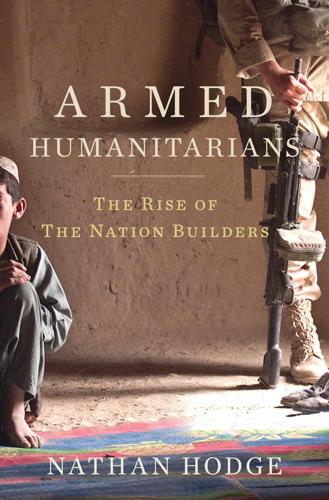
Armed Humanitarians
by
Nathan Hodge
Published 1 Sep 2011
Startled from their cots by a deafening crack, soldiers donned gas masks and climbed back in their sleeping bags. The all-clear sounded soon after over the camp loudspeakers. It was friendly fire. As it turned out, we had heard the impact of a U.S. Patriot missile smacking into a Royal Air Force GR4A Tornado fighter. The missile battery failed to pick up the aircraft’s IFF (identification friend or foe) beacon, an electronic signal that is supposed to prevent fratricide.1 Both crew members were killed. Word of the incident spread quickly, but although it occurred within earshot, I did not learn the full details until I heard about it from the BBC (a young company commander, better prepared than I, had remembered to pack a shortwave radio).
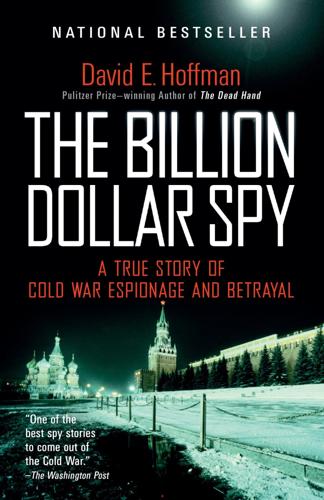
The Billion Dollar Spy: A True Story of Cold War Espionage and Betrayal
by
David E. Hoffman
Published 9 May 2016
This spoke volumes about the state of the Tolkachev operation after four years. The Tu-22M and the Tu-160, known by NATO as the Backfire and the Blackjack, respectively, were supersonic strategic bombers, neither of which was directly in Tolkachev’s line of work. Nor was the Yak-41, a vertical takeoff and landing aircraft that was never produced. The IFF (identification friend or foe) and sapfir radars were definitely within Phazotron’s field of research, but Tolkachev had already provided extensive material on the sapfir. Tolkachev was being pushed to grab secrets well beyond those that he would normally see at the office.34 The CIA wrestled with whether to give Tolkachev new miniature spy cameras for use at his office.
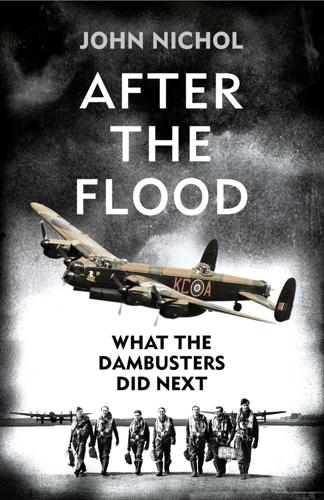
After the Flood: What the Dambusters Did Next
by
John Nichol
Published 1 Jul 2015
A thousand aircraft were involved in D-Day operations that night, and the fuselages and wings of all Allied aircraft, including 617’s, were painted with black and white stripes, like a piano keyboard, to minimise the risk of losses to ‘friendly fire’, since the volume of D-Day signals traffic was certain to swamp the normal IFF (Identification Friend or Foe) system that used a transponder to identify friendly aircraft to British radar. Bomber crews were also forbidden from jettisoning bombs over the Channel that night, because of the significant risk of hitting one of the hundreds of Allied ships making the crossing. To reinforce Operation Taxable’s simulation of an invasion at close to the Channel’s narrowest point, hundreds of fake aircraft, landing craft and military vehicles had been assembled in Kent for the benefit of German air reconnaissance and spies.
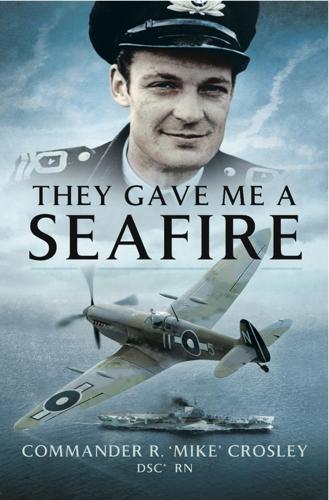
They Gave Me a Seafire
by
Commander R 'Mike' Crosley Dsc Rn
Published 5 Aug 2014
This allowed him to assess the height of any approaching raid without having the more modern height-finding radar in the ship at all. Being a practical scientist he had worked this out for himself. Also at this time, we had to fit a new ‘black box’ in the back of our Hurricanes. This was the IFF (Identification Friend or Foe), to help identify us so that we should not be mistaken for a German or an Italian. In addition, we had a new, four-channel, crystal-tuned r/t set — TR1196 — to replace the single channel manually-tuned TR9D. The new set had a lever which selected any of four HF channels. The old wire aerial was removed from between the tail and fuselage and a short ‘whip’ aerial substituted.
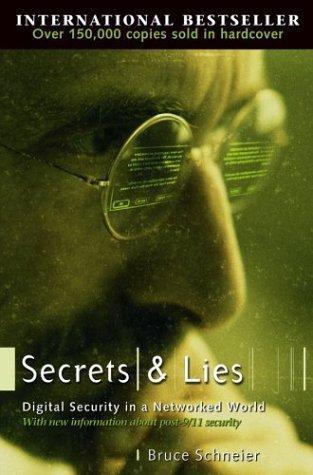
Secrets and Lies: Digital Security in a Networked World
by
Bruce Schneier
Published 1 Jan 2000
Most will have to be international: a Net-based passport, commerce systems used for international commerce (which is all of them, these days), digital signatures on international contracts and agreements. Often computer authentication is invisible to the user. When you use your cell phone (or your pay-TV system), it authenticates itself to the network so the network knows who to bill. Military aircraft have IFF (identification friend or foe) systems to authenticate themselves to allied aircraft and antiaircraft batteries. Burglar alarms include authentication, to detect someone splicing a rogue alarm (that will never go off ) into the circuit. Tachographs, used in trucks throughout Europe to enforce driving rules, such as mandatory rest periods, use authentication techniques to prevent fraud.
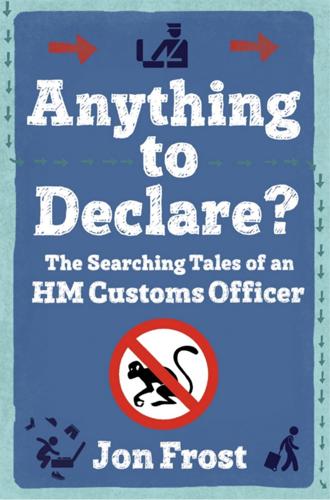
Anything to Declare?: The Searching Tales of an HM Customs Officer
by
Jon Frost
Published 8 Apr 2015
At the same time as the gun-parts affair was going on, we were working with the FBI, CIA and US Customs. The Americans had discovered that a military electrical company was supplying computer chips to the Iraqis for their fighter aircraft. The chips were for the aircrafts’ weapons system called the IFF – Identification: Friend or Foe. Basically, plane A sends out an automated signal to plane B. Plane B sends an automated reply to plane A. If the reply is coded correctly, then plane A’s weapon system does not deploy because plane B has identified itself as friendly. If the code is incorrect, then plane A deploys its weapons and plane B becomes toast ASAP and there’s sweet FA it can do about it.
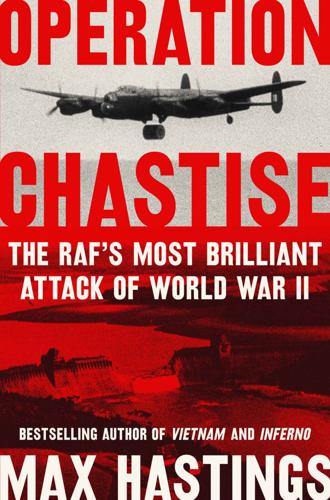
Operation Chastise: The RAF's Most Brilliant Attack of World War II
by
Max Hastings
Published 18 Feb 2020
Abbreviations Used in the Text AOC – Air Officer Commanding ATS – Auxiliary Territorial Service; women’s branch of the army CAS – Chief of the Air Staff; head of the RAF C-in-C – Commander-in-Chief CO – Squadron commanding officer Gee – Electronic navigation aid, detecting a grid of radio signals transmitted from the UK, fitted to all Bomber Command aircraft but jammed by the Germans over continental Europe HCU – Heavy Conversion Unit IFF – Identification Friend or Foe: electronic radar-pulse identification device fitted to all British aircraft MAP – Ministry of Aircraft Production MEW – Ministry of Economic Warfare OTU – Operational Training Unit RAAF – Royal Australian Air Force RAFVR – Royal Air Force Volunteer Reserve RCAF – Royal Canadian Air Force RNZAF – Royal New Zealand Air Force SASO – Senior Air Staff Officer; comparable to an army or divisional commander’s chief of staff USAAF – United States Army Air Force WAAF – Women’s Auxiliary Air Force; thus a woman serving at an RAF station would be described as a ‘Waaf’ w/op – Wireless-operator Narrative of operations uses a twenty-four-hour clock, while the twelve-hour civilian clock is used for other timings.
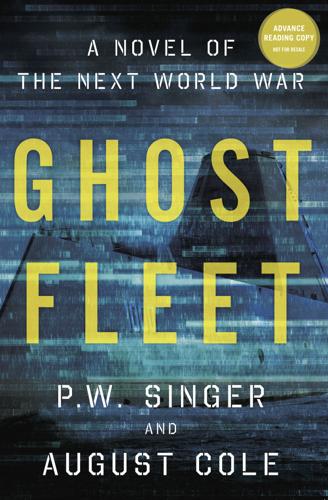
Ghost Fleet: A Novel of the Next World War
by
P. W. Singer
and
August Cole
Published 28 Jun 2015
“Captain, visual IFF signal just confirmed it’s ours,” said Seaman Eric Shear. Simmons took the oversize binoculars. There was an electronic icon in the viewfinder that prompted him to turn to the port side and look slightly up toward the incoming plane, three miles out and closing quickly. A repeating triple dash of lights confirmed the IFF — the identification, friend or foe — signal. “We’d be dead by now if it wasn’t,” said Simmons. “Get the recovery crew ready.” “Already standing by, sir,” said Shear. The form of a gray General Atomics Avenger stealth drone appeared behind the lights. It moved fast and low, lower than any human pilot would dare take a plane, fifteen feet above the sea, the splash from the highest waves licking at its underbelly.
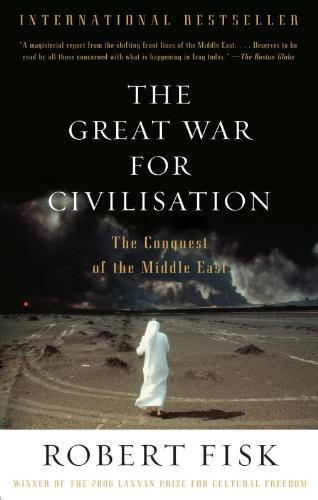
The Great War for Civilisation: The Conquest of the Middle East
by
Robert Fisk
Published 2 Jan 2005
Or—more to the point—how could the Iraqis and Iranians fight in this sweltering air and remain sane? “There’s Sharjah airport,” the radar officer said, and fixed the beam. “I’m listening to a plane landing now—commercial flight—but if I want to know about a specific plane, I ask for an IFF [identification, friend or foe?] and talk to Sharjah control.” There were boards and charts and crayon marks on war-zone lines. The USS Reid —part of Reagan’s Gulf flotilla—had just cut across the Iraqi “exclusion zone.” So much for Stark’s insistence that it stayed outside. Two Soviet Natyaclass minesweepers and a submarine depot ship were listed as outside the Hormuz Strait.